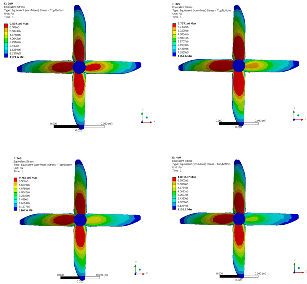Researchers in Perm have discovered how the stiffness of an aircraft propeller affects ice formation.
An article with the results has been published in the "Herald of the Moscow Aviation Institute." The work was carried out with financial support from the Russian Science Foundation and the Ministry of Education and Science of the Perm Krai.
For propulsion systems used in passenger and cargo aviation, there are various anti-icing systems. However, these are not widely applicable to small aircraft and rotary engines, such as convertiplanes, which are utilized for environmental monitoring and terrain mapping.
In this case, passive methods are necessary to completely prevent ice formation or excessive ice accumulation. One of the most cost-effective and simple passive protection methods involves a brief sharp increase in the propeller's rotational speed. This allows the mass of ice attached to it to be shed. However, the process largely depends on the stiffness of the blades and the degree of icing. It is crucial to avoid high vibrational loads that could increase stress and lead to engine damage.
Scientists from Perm Polytechnic suggested that using pairs of blades with different stiffness in the propeller's design would reduce vibrations during ice shedding. Each pair of opposite blades should have the same stiffness.
The polytechnic researchers developed two design options for the fan with various combinations of blade stiffness. The experiment was conducted in a specialized refrigerated wind tunnel, where they studied how changes in blade stiffness affect the fan's vibrational characteristics during operation.
The tests showed that ice accumulation on the fan with less stiff blades is accompanied by a sharp increase in vibration speed and the emergence of a critical mode. This phenomenon was not observed in the fan with stiffer blades.

The researchers also simulated different combinations of blades with varying stiffness and calculated how stresses are distributed in the ice layer during high-speed fan rotation (10,000 RPM).
"We found that increasing the stiffness of the propeller blade from 800 to 1620 N/m leads to a leveling of the stress-deformed state in the ice layer. With a 36 percent increase, the average stresses in the ice decrease by 22 percent. If the stiffness is increased by 174 percent, the average stresses decrease by 52 percent," shared Stanislav Kalyulin, Deputy Dean for Science and Innovation at the Aerospace Faculty of PNIPU and Deputy Director of the Center for High-Performance Computing Systems, PhD in Technical Sciences.
Researchers from Perm Polytechnic have demonstrated that changes in stresses in the ice layer depend on the stiffness values of the fan blades. The results of the study will help optimize the design and prevent damage to the rotary engines of small-sized aircraft during icing.